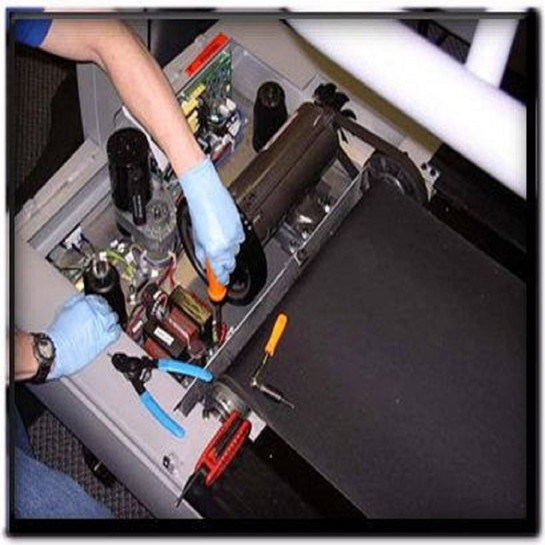Are treadmills easy to diagnosis for repair?
Demystifying Treadmill Diagnosis: How Easy is it to Spot and Fix Issues?
Introduction to Treadmill Diagnosis
Treadmills are a popular exercise equipment choice for many fitness enthusiasts. However, like any mechanical device, they can experience issues over time. Diagnosing and fixing these issues can seem like a daunting task, especially for those who are not familiar with the inner workings of a treadmill. In this article, we will demystify treadmill diagnosis and explore how easy it is to spot and fix common issues.
Common Issues with Treadmills
Before we delve into the diagnosis process, let's first identify some common issues that can occur with treadmills. One of the most prevalent problems is a malfunctioning motor. This can manifest in various ways, such as the treadmill not starting at all, or the motor running but the belt not moving. Another issue is a misaligned or loose belt, which can cause slippage or uneven running surface. Additionally, electrical problems, such as a faulty power cord or control panel, can disrupt the treadmill's functionality.
Tools and Equipment Needed for Treadmill Diagnosis
To diagnose treadmill issues, you'll need a few essential tools and equipment. First and foremost, a multimeter is indispensable for testing electrical connections and identifying any faults. A wrench set will come in handy for tightening or adjusting loose components. A belt tension gauge is useful for checking the proper tension of the treadmill belt. Finally, a lubricant specifically designed for treadmills is crucial for maintaining the belt's smooth operation.
Step-by-Step Guide to Diagnosing Treadmill Issues
Now that we have the necessary tools, let's walk through a step-by-step guide to diagnosing common treadmill issues.
- Start with Safety Precautions: Before attempting any diagnosis or repair, ensure that the treadmill is unplugged and the power switch is turned off. This will prevent any accidental injuries.
- Inspect the Power Cord and Outlet: Examine the power cord for any visible damage or loose connections. Plug the treadmill into a different outlet to rule out any electrical issues.
- Check the Control Panel: Look for any error codes or unusual display readings on the control panel. This can indicate an electrical problem or a malfunctioning sensor.
- Test the Motor: Use a multimeter to check the motor's power supply. If there is no voltage reading, the motor may be faulty and require replacement.
- Examine the Belt and Deck: Inspect the treadmill belt for any signs of wear, fraying, or misalignment. Check the deck beneath the belt for any damage or warping.
- Evaluate the Tension: Using a belt tension gauge, ensure that the treadmill belt is properly tensioned. Adjust as necessary to prevent slippage or excessive tightness.
- Inspect the Rollers and Bearings: Check the treadmill's rollers and bearings for any signs of wear or damage. Replace if necessary to ensure smooth belt operation.
- Test the Safety Key: Ensure that the safety key is properly inserted and functional. If it is damaged or missing, replace it immediately for safe operation.
Common Treadmill Repair Solutions
Once you have identified the issue through the diagnosis process, it's time to explore common repair solutions. Here are a few examples:
- Motor Replacement: If the motor is faulty, it will likely need to be replaced. Consult the treadmill's manual or contact the manufacturer for the correct replacement part.
- Belt Realignment: If the treadmill belt is misaligned or loose, you can usually adjust the tension or realign it following the manufacturer's instructions.
- Electrical Repairs: For electrical issues, it is recommended to seek professional help. Attempting to repair electrical components without proper knowledge can be dangerous.
- Lubrication: Regularly lubricating the treadmill belt can prevent friction and extend its lifespan. Follow the manufacturer's guidelines for the appropriate lubricant to use.
When to Seek Professional Help for Treadmill Repair
While many treadmill issues can be diagnosed and resolved by the average user, there are times when professional help is necessary. If you are unsure about the diagnosis or lack the technical skills to perform the repairs, it is best to consult a professional technician. Additionally, if the treadmill is still under warranty, attempting repairs yourself may void the warranty, so it's essential to consider this before proceeding.
Tips for Maintaining a Healthy Treadmill
Prevention is always better than cure, and the same applies to treadmills. Here are some tips to help you maintain a healthy treadmill and minimize the chances of encountering issues:
- Regular Cleaning: Dust and debris can accumulate on the treadmill, affecting its performance. Regularly clean the belt, deck, and control panel to ensure optimal functioning.
- Proper Lubrication: As mentioned earlier, lubricating the treadmill belt is crucial for smooth operation. Follow the manufacturer's recommendations for frequency and type of lubricant.
- Balance Usage: Avoid excessive and prolonged use of the treadmill. Overuse can lead to premature wear and tear of components. Give the treadmill rest periods to prevent overheating.
- Monitor and Tighten: Periodically check all the screws, nuts, and bolts on the treadmill. Over time, vibrations can cause them to loosen. Tighten as necessary to maintain stability.
How to Troubleshoot and Prevent Future Treadmill Issues
Now that you have diagnosed and fixed the current treadmill issue, it's essential to troubleshoot and prevent future problems. Here are some troubleshooting and preventive measures to consider:
- Regular Inspections: Conduct routine inspections of your treadmill to identify any signs of wear, damage, or malfunctioning components. Catching issues early can prevent them from escalating.
- Read the Manual: Familiarize yourself with the treadmill's user manual. It contains valuable information on maintenance, troubleshooting, and safety precautions.
- Proper Usage: Follow the manufacturer's guidelines for weight limits and usage instructions. Exceeding these limits can put undue stress on the treadmill and lead to issues.
- Educate Yourself: Stay informed about common treadmill issues and their solutions. Online forums and communities can be excellent resources for learning from others' experiences.
Treadmill Diagnosis vs. Professional Diagnosis: Pros and Cons
While you can diagnose and fix many treadmill issues yourself, there are pros and cons to consider when comparing treadmill diagnosis to professional diagnosis.
Treadmill Diagnosis:
Pros:
- Cost-saving: You can avoid hefty service charges by diagnosing and fixing the issue yourself.
- Learning opportunity: Diagnosing and repairing your treadmill can help you gain knowledge and confidence in handling similar issues in the future.
- Convenience: You can perform the diagnosis at your own pace and convenience.
Cons:
- Lack of expertise: If you are unfamiliar with treadmill mechanics, you may not be able to diagnose complex issues.
- Time-consuming: Diagnosing and repairing a treadmill can be a time-consuming process, especially if you are new to it.
- Risk of further damage: Without proper knowledge, you run the risk of exacerbating the issue or causing additional damage.
Professional Diagnosis:
Pros:
- Expertise and experience: Professional technicians have the knowledge and experience to diagnose and repair complex treadmill issues promptly.
- Warranty protection: If your treadmill is still under warranty, professional repairs ensure that the warranty remains valid.
- Time-saving: Professionals can diagnose and fix issues more efficiently, saving you time and effort.
Cons:
- Service charges: Seeking professional help can come with service charges, which may vary depending on the complexity of the issue.
- Limited availability: Depending on your location, finding a reputable treadmill repair service may be challenging.
Conclusion: The Importance of Regular Treadmill Maintenance and Diagnosis
In conclusion, demystifying treadmill diagnosis reveals that while some issues can be easily spotted and fixed, others may require professional assistance. Regular maintenance and diagnosis are crucial for ensuring the longevity and optimal performance of your treadmill. By following the provided step-by-step guide, troubleshooting tips, and preventive measures, you can minimize the chances of encountering issues and enjoy a healthy and hassle-free workout experience. Remember, a well-maintained treadmill is a reliable fitness companion.


